Palms are among the most popular indoor plants. Their popularity is owed to their tropical look which exudes relaxation and tranquility. What’s surprising about palms is that although they are native to tropical environments, they grow relatively well in normal indoor environments.
As the name suggests, the Parlor Palm is an ideal indoor plant. It is also known as the Neanthe Bella Palm or the Bamboo Palm as its multiple stems bear a striking resemblance to bamboo sticks.
About the Parlor Palm
- This indoor herbaceous perennial got its nickname in the Victorian times when it became very popular in many parts of the world. During those times, the parlor was the best and most visited room in the house, as it is where the guests were entertained. Since the Chamaedorea Elegans was very popular at that time, it could be found in most parlors.
- The Parlor Palm is native to the tropical areas of Central America, being very common in the rainforests of Guatemala, Honduras, Belize, and Southern Mexico. It prefers the shady area of the forests where it usually grows on moist soils, with plenty of humus or on limestone soil. It prefers the forests on elevated areas of 1400 meters.
- It is one of the palm species whose leaves are used as Xate. This is a florist term which describes the rich leaf fronds used in flower arrangements. The leaves can last up to 40 days after being cut. Since there are no Xate plantations in the world, the leaves are gathered exclusively from forests. This has severely affected the Chamaedorea population and its natural habitats.
- The Parlor Palm is cultivated as an indoor plant all over the world, and in some parts of the southeastern United States, it can also successfully grow outdoors.
- The Parlor Palm can handle low light conditions extremely well, which is why it can be found even in small offices with limited natural light.
- It has great air-purifying properties ranking on the 21st spot on NASA’s top 50 indoor air purifying plants.
- This plant is not toxic to animals or humans. However, the juice of its fruit can sometimes cause skin irritations.
- The plant is susceptible to pests such as spider mites, mealy bugs, aphids, whitefly, and scale. The pests can be removed with soapy water, beer, garlic, or commercial pesticides.
- This is one of the slowest growing indoor plants and it can take decades for a Parlor Palm to reach its full size. As a result, fully grown parlor palms are pretty valuable.
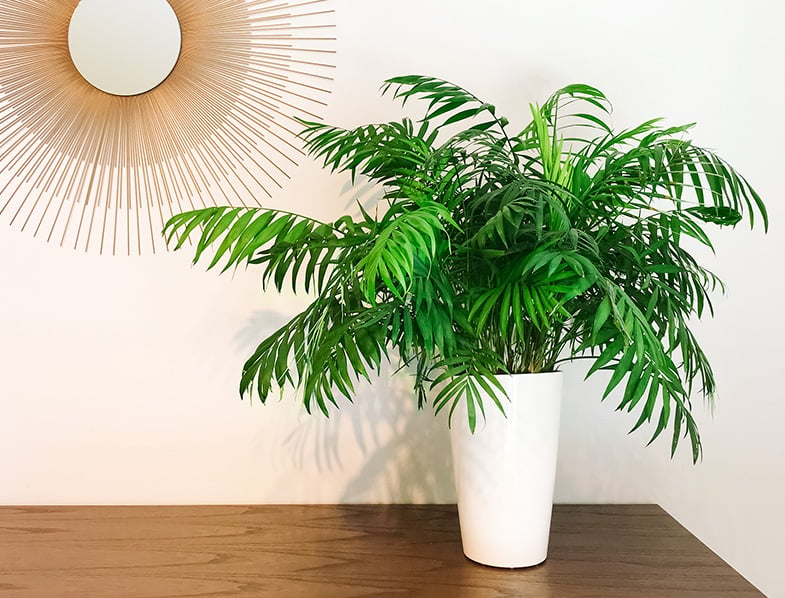
Parlor Palm Features: An Overview
- In the wild, the Parlor Palm can grow up to 3-4 meters tall, but its growth is very slow even in its native habitat. It grows even slower when it is cultivated in a pot. Generally, parlor palms reach a maximum height of 2 meters when grown indoors.
- Parlor palms grow in clusters of several smaller plants that give them a rich, bushy appearance.
- They bloom in the spring when they produce small yellow flowers. The flowers grow on tall stalks that stand taller than the foliage. However, it is quite uncommon for this plant to bloom indoors.
- Unlike its relatives, the Parlor palm does not produce edible fruit.
- The plant’s foliage is made of delicate green fronds with a length of about 20 cm.
Growing the Parlor Palm
This plant grows extremely well in low light conditions, so it will be very happy in a north-oriented room. However, it will not tolerate deep shade or a complete lack of natural light. On the other hand, bright, direct sunlight will damage the leaves, so you must be careful to give it the right amount of light.
If you don’t have a north-oriented windowsill to place it on, you can also put it in a sunnier location, provided that you use a thin curtain to filter some of the light.
This plant is not fussy in terms of humidity. If you don’t keep it in a very dry environment, near a direct source of heat, it will grow well in most indoor environments.
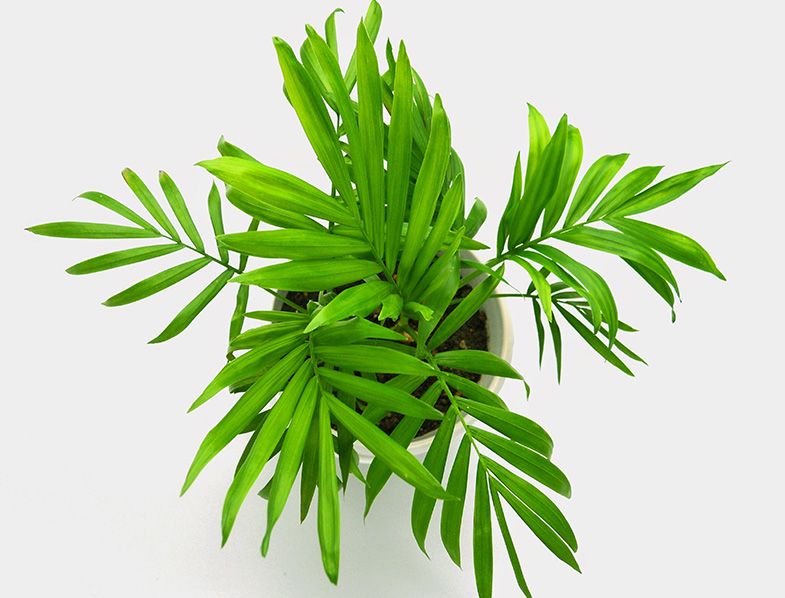
Feeding depends on the plant’s size and age. A mature plant will require feeding every couple of months whereas a smaller plant might need to be fed every month. You can either use a soluble fertilizer every month, or you can use a slow-release fertilizer every three months. You should only fertilize during the growing season, more specifically during spring and summer. Plants tend to be dormant in late fall and winter, so you should not feed them during this time.
As far as the temperature goes, the plant will survive even at lower temperatures of 10°C. However, for growth to occur, it will require a warmer environment of 20-30°C.
Repotting Parlor Palms
Since it is a very slow grower, this plant does not require frequent repotting. Young plants will have to be repotted once a year, whereas mature plants will need repotting once every two-three years when the soil starts to break down. Make sure the roots are packed tight when repotting.
A peat-based mix will work just fine, or any other medium with good draining properties. Heavy mediums are problematic because they retain moisture and can cause the roots to rot. Outdoors, it can survive in any type of soil, be it loam, clay, or even sand.
During the summer, indoor plants can be relocated outdoors. It is important not to shock the plant with an extreme environment change, so make sure to relocate it in a partially shady location, preferably sheltered from the wind.
While this plant’s foliage has a very delicate texture, it is very resilient, and it will rarely require maintenance. The plant only grows upright, and the leaves are evergreen so pruning will not be required. However, since it is susceptible to pests, you will have to check it regularly. The sooner you identify the pests, the easier it will be to get rid of them.
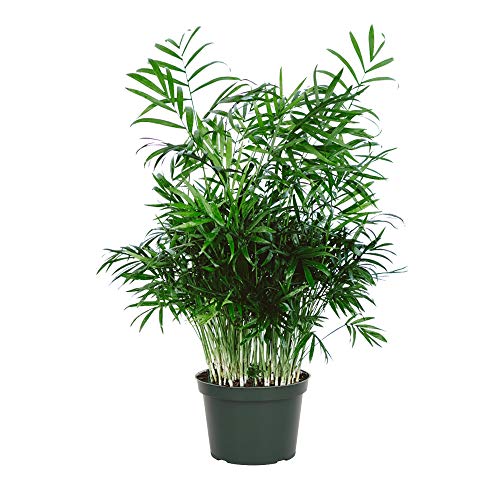
Chamaedorea Elegans Victorian Parlour Palm Live Plant, From Amazon
Watering the Parlor Palm
Like most tropical plants, the Chamaedorea Elegans is used to extended droughts, so it will not punish you if you forget to water it from time to time. However, overwatering can cause the roots to rot, so make sure not to leave excess water in the drip tray. It is best to allow the top inch of the soil to dry before you water the plant.
Watering should always be adjusted according to each season. So, while warmer seasons may require more frequent watering, you should reduce the watering frequency as the temperatures and the light levels drop.
This plant prefers room temperature water. Ideally, you should use either rainwater or distilled water. If that is too much trouble, consider leaving the tap water to rest overnight. This way some chemicals will settle or evaporate.
While tropical plants can handle dry environments, they grow faster in more humid environments. As such, consider placing some pebbles in the drip tray. This way, the extra water will not damage the plant’s root. Instead, it will evaporate around it, creating a more humid environment.
The plant will enjoy occasional spraying or a light shower. This will wash off the dust particles and it will leave the leaves looking clean and shiny.
Propagating the Parlor Palm
Growing this plant from seed is possible, but it is very time-consuming. The seeds need to be sown fresh and the germination periods can vary greatly. Depending on the growing environment, the germination can last from one month to way over 6 months. Moreover, cross-pollination is also necessary.
Nonetheless, you can find seeds for sale in flower shops. Use a seed-starting tray with 10 cm containers. Plant a seed in each container, about 1 cm deep into the soil. Cover the seed, water it, and place it in a warm environment. If you plant several seeds in one tray make sure to leave at least 10-15 cm between them.
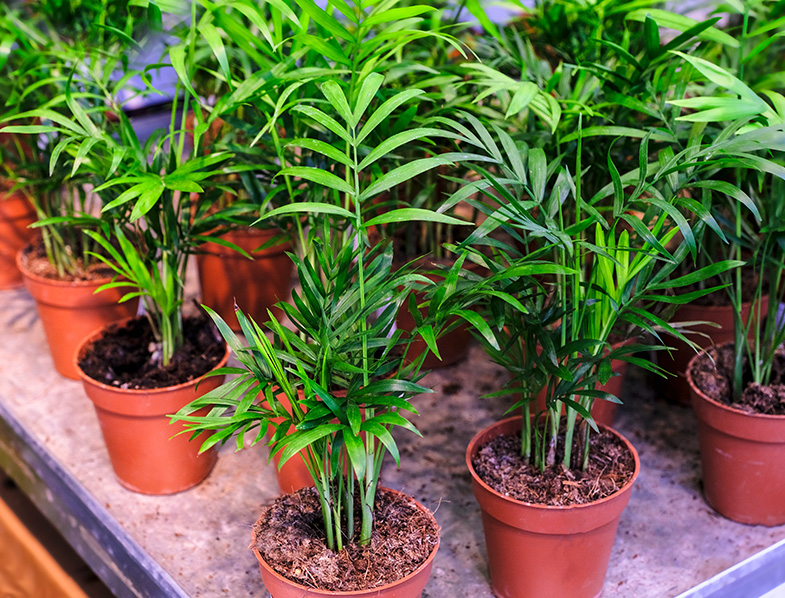
Since the parlor plant comes in clusters of several plants, the best way to propagate is through division. However, be very careful as the division will severely impact the mother plant’s appearance, and the division process can also be very harsh if it is not done properly.
When propagating, choose a small pot that can hold a single stem. Use a soilless medium made of peat moss and vermiculite or perlite. When you release the mother plant from its plant, gently loosen the soil to expose the root system. Use a sharp blade and cut off a healthy stem with its own root. After planting the new plant and repotting the mother plant, water them both very well and place them in a warm spot so that they can recover from the division.
In Conclusion
We may not be as formal as we were during Victorian times, but the parlor palm is still one of the most popular indoor plants and its exotic appearance continues to add a touch of elegance to many homes.
This is a very resilient plant, and it can survive subtle environmental changes and even lack of water for a couple of weeks. As such, it is a great choice for beginner gardeners, or for public spaces where there is not a designated person to take care of the plants. Despite its slow growth rate, the Parlor Palm will be the highlight of any room as even young plants have rich foliage.
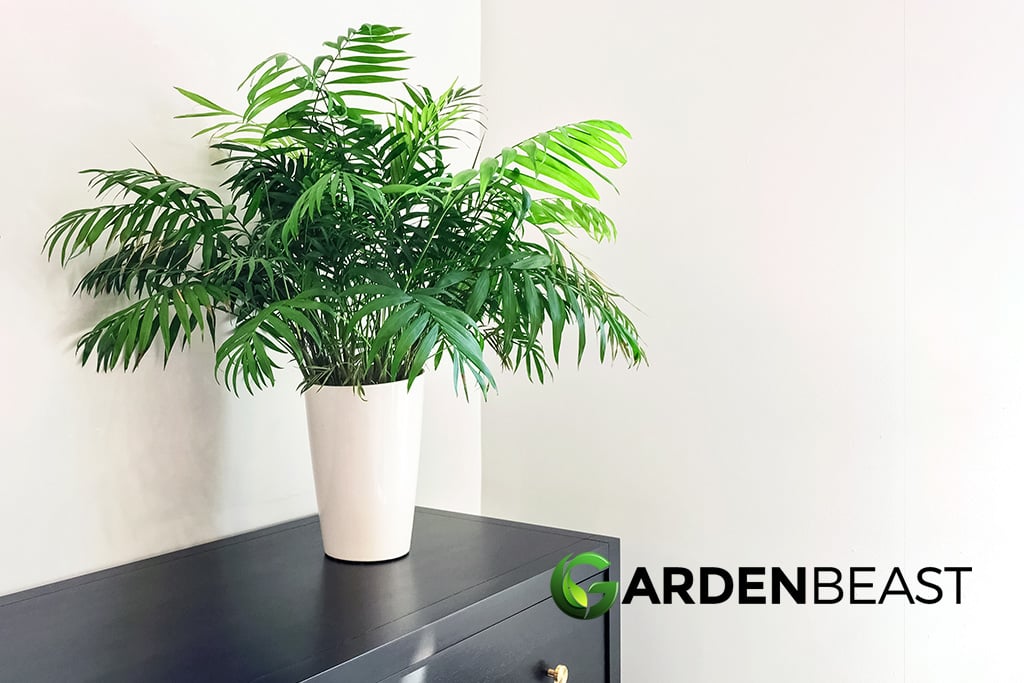
1 Comment
I ordered mine from the sill almost 3 months ago and it is completely dry. I’m not sure what to do to help revive it, any tips?